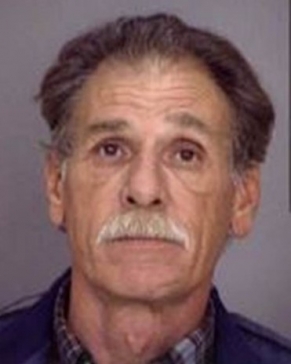 DNA evidence helps detectives solve 1994 murder.
DNA evidence helps detectives solve 1994 murder.
Source: San Diego County Sheriff
October 17, 2022 (Borrego Springs) - On March 21, 1994, 72-year-old Claire "Kay" Holman was found murdered in her home located in the 700 block of Tilting T Drive in Borrego Springs.
The San Diego County Sheriff's Homicide Unit responded and assumed responsibility for the investigation. An extensive investigation was performed to identify a suspect.
 The County Medical Examiner's Office conducted an autopsy on Kay. The cause of Kay's death was ligature strangulation and the manner of her death was homicide.
The County Medical Examiner's Office conducted an autopsy on Kay. The cause of Kay's death was ligature strangulation and the manner of her death was homicide.
In 2003, the Sheriff's Crime Lab obtained a DNA profile from evidence recovered at the crime scene in 1994. This data was entered into a federal database of DNA from unsolved crimes or Combined DNA Index System (CODIS). However, no matches were received.
In March 2021, the Sheriff's Homicide Cold Case Team (comprised of crime lab personnel, criminal analysts and detectives) reviewed the case for the possible use of investigative genetic genealogy in an attempt to identify a suspect.
In April 2022, the Cold Case Team obtained an additional DNA sample extracted from a strand of hair recovered at the crime scene.
This sample allowed the Cold Case Team to develop investigative leads that led them to identify Jerry Dewayne Robison (DOB: 9/9/1942) as a possible suspect. Robison was a Borrego Springs resident at the time of Kay's murder.
In September 2022, the Cold Case Team was able to use investigative genetic genealogy to confirm Robison as the suspect in the murder of Kay.
Detectives also discovered that Robison had died in 2007.
The families of both Kay Holman and Jerry Robison have been informed.
The Sheriff's Homicide Unit only utilizes investigative genetic genealogy when all other methods have been exhausted. This technique combines the science of DNA with the art of genealogy.
In this case, the goal was to find relatives whose own DNA profile matched those of an unidentified suspect in Kay's murder. The suspect's profile was developed and uploaded into commercial genealogy sites that allow law enforcement agencies to participate.
Only people who gave consent to participating with law enforcement are visible to detectives.
 The Cold Case Team then formed family histories in the form of "trees," which led detectives to other potential relatives of Robison. This process identified three family trees that were constructed with 118 people connected to Robison either through blood or marriage.
The Cold Case Team then formed family histories in the form of "trees," which led detectives to other potential relatives of Robison. This process identified three family trees that were constructed with 118 people connected to Robison either through blood or marriage.
When speaking with relatives, detectives identify themselves, tell the person what they are investigating, explain the process, and ask for their assistance. This process eventually led investigators to closer relatives and ended with contacting Robison's direct relatives who provided DNA samples, which confirmed the identification.
This murder would likely have gone unsolved if not for the use of investigative genetic genealogy. The San Diego County Sheriff's Department would like to thank everyone who spoke to us and provided valuable information throughout our investigation.
This is the sixth time the Cold Case Team has used investigative genetic genealogy to solve a cold case.
- Orbin Holloway
- Teresa Solecki
- Michelle Louise Wyatt
- Laurie Diane Potter
- Diane Lynn Dahn







Recent comments